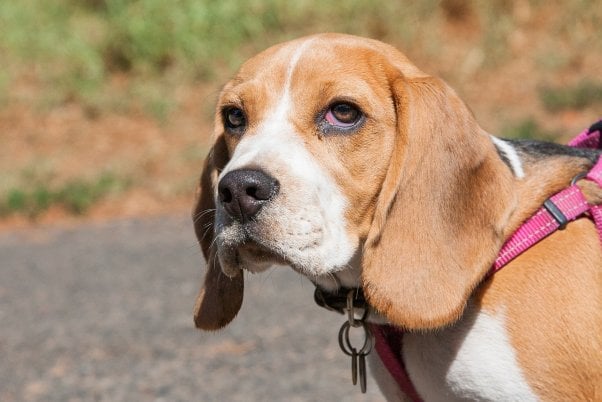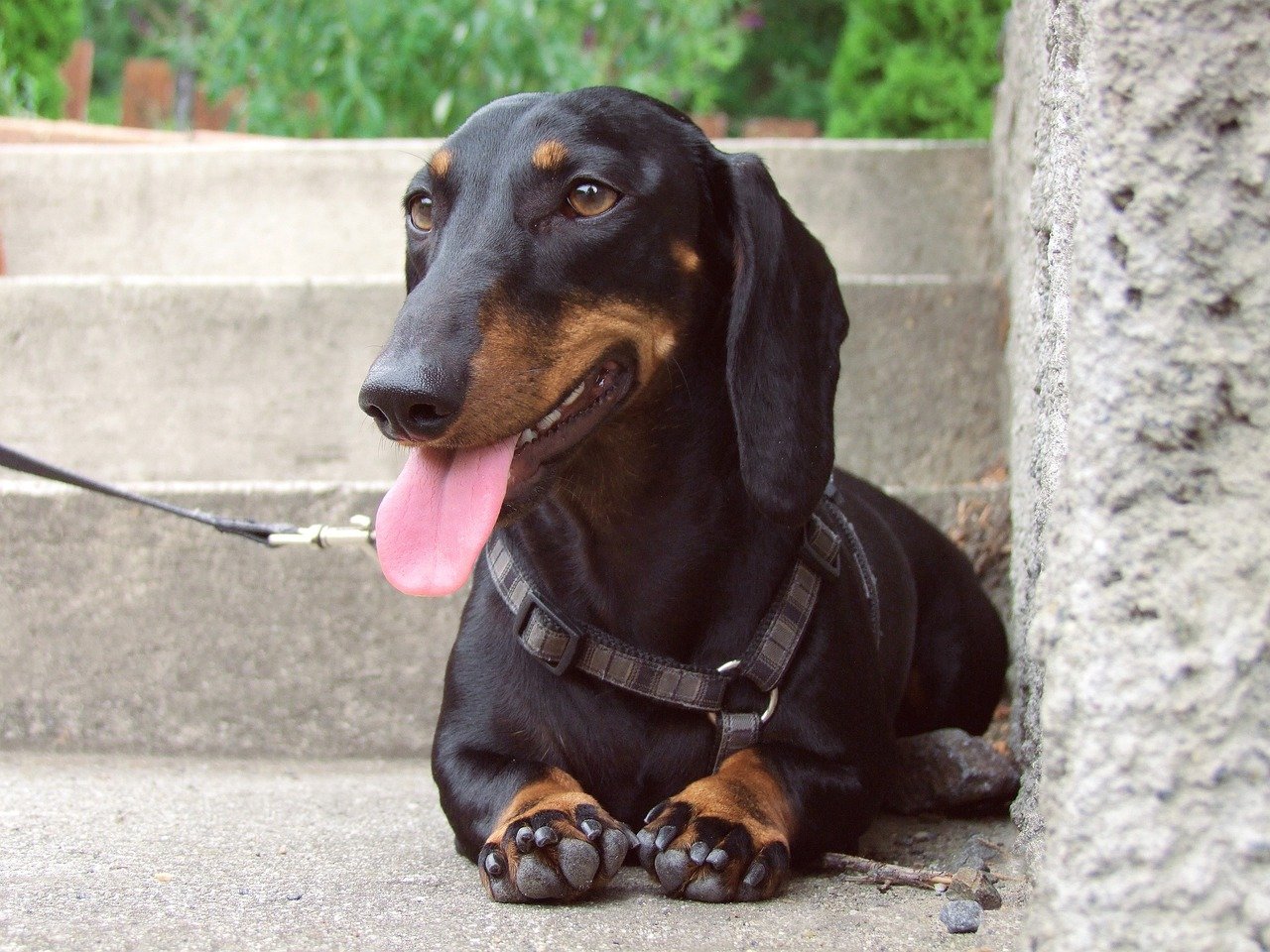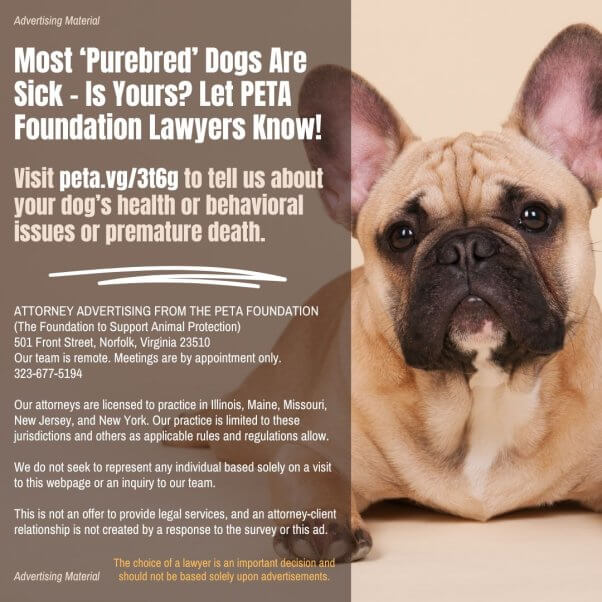There’s No Such Thing as an ‘Overbred’ Dog—Here’s Why
There’s no such thing as an “over-bred dog” since all breeding is overbreeding. With more than 70 million homeless animals struggling to survive on any given day in the U.S., there is no excuse for bringing any additional animals into the world. Plus, all purebred dogs are prone to suffering from health problems. When those unhealthy purebred dogs are described as the “most popular” breeds, greedy breeders bring more and more of them into the world to make a profit. What breeders and the “pet” industry typically won’t mention is the lifetime of suffering that these overbred dogs will be forced to endure.
The Top 10 ‘Overbred’ Dogs and Their Ailments
1. French Bulldog

After a French bulldog named Winston won Best in Show at the 2022 National Dog Show, a new statistic by the American Kennel Club (AKC)—a purebred dog registry—revealed that that breathing-impaired breed was the most registered breed in 2022.
In addition to brachycephalic airway syndrome, which makes breathing nearly impossible, French bulldogs suffer from the following:
- Cataracts
- Cleft lip/palate
- Corkscrew tail (deformed vertebrae)
- Corneal ulcers
- Dystocia (difficulty giving birth)
- Ear infections
- Elbow dysplasia
- Entropion (eyelid disorder)
- Hemivertebra (spinal deformity)
- Hemophilia (blood disease)
- Inflammatory bowel disease
- Intervertebral disc disease
- Patellar luxation
- Prolapsed nictitating membrane gland (cherry eye)
- Skin infections
- Upper respiratory tract disorders
2. Labrador Retriever

Until 2023, Labrador retrievers had been the most AKC-registered dog breed for 31 years. Over the course of those three decades, Labs were shown to have suffered from the following:
- Cataracts
- Corneal dystrophy
- Cranial cruciate ligament rupture
- Ear infections
- Entropion and ectropion (eyelid problems)
- Epilepsy
- Gastric dilatation and volvulus (bloat) and other gastrointestinal problems
- Hereditary myopathy (muscular disorder)
- Hip and elbow dysplasia
- Neoplastic disorders, including cancer
- Neuroaxonal dystrophy (neurological disorder)
- Obesity
- Osteoarthritis or degenerative joint disease
- Panosteitis (inflammation of the bone marrow)
- Progressive retinal atrophy
- Skeletal dwarfism
- Skin disorders
3. Bulldog

The medical conditions afflicting bulldogs are so severe that Norway banned the breeding of British bulldogs after a court there ruled that the dogs could never be considered healthy, in large part because of their status as a breathing-impaired breed. As a result of selective breeding, bulldogs (also known as “British bulldogs” or “English bulldogs”) can often only breed via artificial insemination and cesarean section because their heads are too large and their hips too small to give birth naturally. They also commonly suffer from breathing problems and the following conditions:
- Conjunctivitis
- Corkscrew tail (tail deformity)
- Demodectic mange
- Dermatitis
- Entropion (eyelid problem)
- Heart problems
- Heat and exercise intolerance
- Hemivertebra (spinal deformity)
- Prolapsed nictitating membrane gland (cherry eye)
- Upper and lower respiratory tract disorders
4. Golden Retriever

Golden retrievers are at a higher risk than most other breeds of suffering from:
- Cervical vertebral instability (wobbler syndrome)
- Dermatitis
- Diabetes
- Elbow and hip dysplasia
- Entropion (eyelid problem)
- Heart conditions (multiple types)
- Hypothyroidism
- Idiopathic epilepsy
- Kidney dysplasia
- Muscular dystrophy
- Portosystemic shunt (deformity affecting the liver)
- Progressive retinal atrophy
- Retinal dysplasia
- Von Willebrand’s disease (bleeding disorder)
5. German Shepherd

German shepherds often have genetic predispositions to the following:
- Cervical vertebral instability (wobbler syndrome)
- Cutaneous asthenia (Ehlers-Danlos syndrome)
- Degenerative lumbosacral stenosis (narrowing of the posterior spinal canal)
- Degenerative myelopathy (progressive, incurable disease of the spinal cord)
- Epilepsy (idiopathic)
- Exocrine pancreatic insufficiency (inadequate production of digestive enzymes)
- Familial cutaneous vasculopathy (blood vessel disorder leading to skin abnormalities)
- Footpad disorder
- Gastric dilatation and volvulus (bloat)
- Heart conditions (multiple types)
- Hemivertebra (spinal deformity)
- Hip and elbow dysplasia
- Hyperadrenocorticism (Cushing’s disease)
- Epilepsy
- Megaesophagus
- Myasthenia gravis (neuromuscular disorder)
- Panosteitis (inflammation of the bone marrow)
- Platelet procoagulant deficiency (blood disorder)
- Progressive retinal atrophy
- Pyoderma (bacterial skin infection)
- Retinal dysplasia
- Von Willebrand’s disease (blood disorder)
6. Pug

Because pugs are a breathing-impaired breed, they are 54 times more likely to suffer from brachycephalic obstructive airway syndrome—a condition that greatly limits their ability to breathe—than other types of dogs. They’re also at higher risk of suffering from the following issues, among many others:
- Diabetes
- Exercise intolerance
- Encephalitis (brain inflammation), including necrotizing meningo-encephalitis
- Joint dislocation
- Keratoconjunctivitis sicca (dry eyes)
- Obesity
- Proptosis (bulging eyes)
- Skin disorders, including demodectic mange
- Spinal deformities, including spina bifida and hemivertebra
7. Cavalier King Charles Spaniel

These spaniels have been bred to have unnaturally shaped skulls, which can cause a condition called syringomyelia, in which the skull is too small for the brain, forcing brain tissue to protrude through the base of the skull and put pressure on the spinal cord. It’s estimated that more than 90% of Cavalier King Charles spaniels suffer from this extremely painful disease. These spaniels are also likely to suffer from several other health problems, including these:
- Brachycephalic obstructive airway syndrome
- Diabetes
- Ear infections
- Epilepsy
- Hip dysplasia
- Ichthyosis (fish scale disease)
- Keratoconjunctivitis sicca (dry eye)
- Microphthalmia (abnormally small eyes)
- Mitral valve disease
- Patellar luxation
- Progressive retinal atrophy
8. Beagle

Beagles face an elevated risk of developing health problems, including these:
- Cataracts
- Cervical vertebral instability (wobbler syndrome)
- Deafness
- Demodectic mange
- Epilepsy
- Glaucoma
- Hypothyroidism
- Intervertebral disc disease
- Progressive retinal atrophy
- Prolapsed nictitating membrane gland (cherry eye)
- Retinal dysplasia
9. Boxer

According to research compiled by the Royal Veterinary College in London, boxers are genetically predisposed to 76 different health conditions. These are some of their most common ailments:
- Cervical vertebral instability (wobbler syndrome)
- Corneal dystrophy
- Cutaneous asthenia (Ehlers-Danlos syndrome)
- Degenerative myelopathy
- Demodectic mange
- Eye ulcers
- Gastric dilatation and volvulus (bloat)
- Heart conditions (multiple, including dilated cardiomyopathy)
- Hip dysplasia
- Hyperadrenocorticism (Cushing’s disease)
- Hypothyroidism
- Inflammatory bowel disease
- Mast cell tumor (malignant cancer of white blood cells involved in immunity)
- Progressive retinal atrophy
10. Dachshund

Dachshunds face a host of health problems. Their long backs and short legs lead to a higher risk of lifelong spinal, knee, and other joint problems. They are also particularly susceptible to these issues:
- Blood disorders, including Von Willebrand’s disease and pyruvate kinase deficiency
- Cataracts
- Corneal dystrophy
- Deafness
- Elbow dysplasia
- Glaucoma
- Hyperadrenocorticism (Cushing’s disease)
- Epilepsy
- Immune-mediated thrombocytopenia (blood disorder)
- Intervertebral disc disease
- Microphthalmia (abnormally small eyes)
- Progressive retinal atrophy
- Skin conditions, including demodectic mange
What Is the True Cost of Purchasing a Dog?
Buying a purebred dog supports breeding, and breeding produces dogs who often suffer from painful health problems throughout their lives. Buying a purebred also takes a potential home away from a dog in a shelter. Don’t throw money at the dog-breeding industry, which clearly doesn’t care about animals’ well-being. There are millions of dogs in need of loving homes, so adopt from a shelter if you’re ready to make a lifetime commitment.



